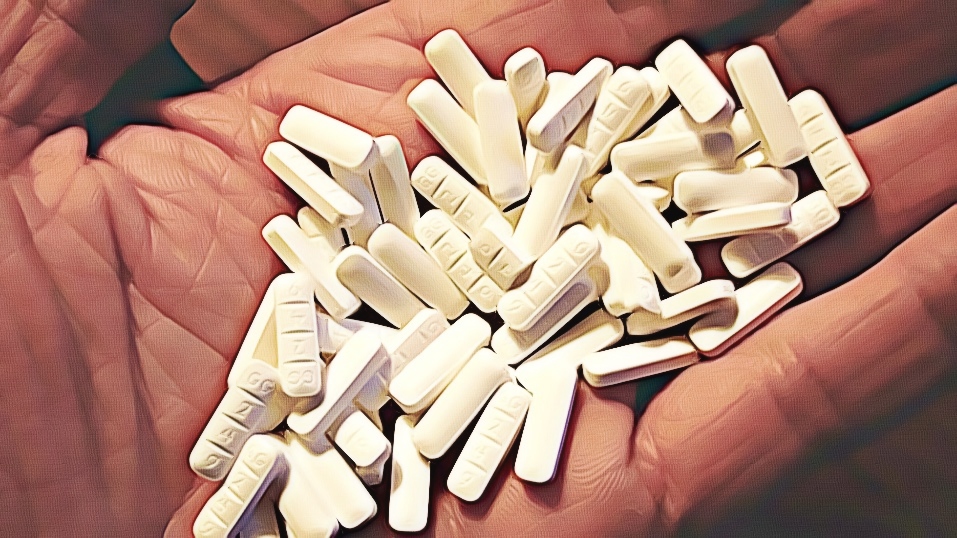Is Xanax an Opioid?
Alprazolam, known commonly as Xanax, is an orally available benzodiazepine used predominantly to treat anxiety. As a DEA-controlled medication, Xanax is available only on a prescription-basis, though many find ways to engage in recreational use. Because Xanax is classified as a benzodiazepine, it is not considered an opioid. However, due to its opioid-like effects, the drug can become addictive. If you or someone you know have developed a dependency on the drug, here is all you need to know about how it functions.
What is Xanax?
Xanax works by attaching to a receptor in the brain called GABA-A (gamma-aminobutyric acid-A), creating a calming effect. It slows functions in the central nervous system (CNS) such as heart rate regulation, breathing, blood pressure, and body temperature. Thus, its effects can reduce feelings of fear, agitation, and anxiety.
Its active ingredient is a DEA Schedule IV controlled substance with a lower potential for abuse than Schedule III materials. Many will still turn to it for recreational use, selling the drug by its street names—benzos, downers, tranks, or nerve pills.
What is the Difference Between Opioids and Opiates?
Though Xanax is not an opioid painkiller, benzodiazepines are still among the most addictive prescription drugs globally. When prescribed together, opioids and benzodiazepines increase the risk of overdose. Learn the difference between opioids and opiates to better understand how Xanax functions.
Opiates pertain to any drug derived from naturally-occurring opium alkaloids found in poppy plants. Common opiate drugs include opium, morphine, and codeine.
On the other hand, opioids exist on a broader spectrum and refer to drugs synthesized from an existing opiate. Both compounds produce similar effects, though opioids are fully or partially synthetic. Examples of common opioids include heroin, oxycodone, hydrocodone, and methadone.
Most opioids are used to treat severe pain, though they can also occasionally alleviate diarrhea or coughing.
Though many organizations will refer to both compounds under the umbrella term opioids, not all opioids are opiates due to their synthetic nature. Regardless of how they are classified, both substances are extremely addictive and can result in a fatal overdose.
Opioid drugs are opiates and synthetic or semi-synthetic opioids. Manufacturers create semi-synthetic drugs from naturally-occurring opiates, while synthetic drugs are entirely artificial.
The most commonly known opiates are morphine and codeine, whereas thebaine is an alkaloid found only in small amounts. While not for therapeutic use or pain management, thebaine combines with other synthetic compounds to create hydrocodone, hydromorphone, oxycodone, and buprenorphine.
What are Synthetic Opioids?
Fully synthetic opioids are entirely human-made and have a different chemical structure than opiates. Still, they produce similar opiate-like effects. Some synthetic opioids include:
- Methadone
- Tramadol (Ultram)
- Meperidine (Demerol)
- Fentanyl (Duragesic or Sublimaze)
- Levorphanol (Levo-Dromoran)
Synthetic opioids are between 50 and 100 times more potent than morphine, used legally only in surgical applications. They also help treat life-threatening diseases and cancer.
What are Semi-Synthetic Opioids?
Semi-synthetic opioids have a chemical structure similar to naturally-occurring opiates. Manufacturers will develop them using these natural compounds. A few semi-synthetic opioids are:
- Heroin
- Hydrocodone (Lortab or Vicodin)
- Hydromorphone (Dilaudid)
- Oxycodone (Percocet or Oxycontin)
Because of their ability to mimic the effects of natural opiates, synthetic and semi-synthetic opioids are potent and often lead to dependency or fatal overdose.
Among the most commonly distributed synthetic opioids is Fentanyl, which treats severe pain. When sold illicitly, many will combine the drug with heroin. Other than methadone, Fentanyl is among the most popularly abused opioids that killed more than 31,000 people in the United States in 2018.

Since then, Fentanyl and Tramadol have caused more deaths due to overdose than heroin, natural opiates, semi-synthetic opioids, and methadone.
Opioid antagonists block these drugs from activating receptors in the body, preventing synthetics from producing euphoria and other addicting effects. Thus, medication such as Naltrexone is a staple in treating opioid addiction. Different ways to treat cravings and withdrawal symptoms include the use of methadone and buprenorphine.
How Long Does Xanax Last?
As with many other drugs, Xanax will remain in the body long after its effects wane. To determine how long a drug stays active in the body, experts use a half-life measurement. As its title suggests, a compound’s half-life pertains to the amount of time it takes for the body to eliminate half of its remains.
Yet, the term half-life can often be misleading. It can take up to four or five half-lives to eliminate a drug from the body entirely in some cases. For Xanax to altogether leave the body, it can take as long as 44 to 55 hours or at least two days.
The half-life of Xanax can last between 8 to 16 hours in a healthy individual, with its mean half-life at 11 hours. While shorter than that of many benzodiazepines, it can still be challenging to detoxify the body of Xanax.
How Xanax Addiction Occurs
When used on a long-term basis, Xanax can become highly addictive. Of the number of teens who become addicted to the drug per year, 70% begin their dependency at home. Many will attempt to take the medication from a family member who is prescribed it.
Because most individuals will quickly develop a tolerance for Xanax, they will need to take the drug in higher volumes to achieve the same relaxing or euphoric effects. Those who suffer from a Xanax addiction will take between 20 to 30 pills a day.
While the ultimate goal of treatment and recovery is for the individual to stop taking Xanax, doing so suddenly can result in withdrawal symptoms. These side effects might include insomnia, restlessness, tremors, and anxiety.
How to Spot Signs of Dependency
When you or someone you know becomes addicted to Xanax, it can affect various aspects of day-to-day life, such as education, employment, and interpersonal relationships. A few recognizable signs of addiction include:
- Losing interest in activities you were once fond of
- Engaging in risky behaviors
- Investing time in the illegal purchase of Xanax
- Inability to stop abusing the drug
- Continuing to use the drug despite experiencing its detrimental effects
- Experimenting with other ways to ingest the drug such as injecting or snorting it
When to Get Help for Xanax Addiction
Admitting that you need help is the first step towards recovery. Reach out to a family member for support and schedule an appointment with your primary healthcare provider as soon as possible. After an initial discussion, they may recommend a specific treatment center or help develop a detox plan.
When undergoing detox, withdrawal symptoms can be severe. These might include:
- Aches and pains
- Aggression, irritability, mood swings, and anxiety
- Blurred vision
- Nausea and vomiting
- Numbness and tingling in the limbs
- Dizziness and headaches
- Depression and suicidal thoughts
- Paranoia and night terrors
During treatment, you might undergo cognitive behavioral therapy (CBT), which addresses the core of your dependency. Over several sessions, you’ll learn self-control and how to incorporate healthy coping mechanisms.
If necessary, you might also undergo family or marital counseling or attend a support group within the therapy center. Some healthcare providers might prescribe other medications to help treat anxiety, depression, and sleep disorders.
So, is Xanax an opioid? It is not classified as an opioid but can still be highly addictive. Xanax addiction is treatable, though it isn’t easy to overcome. Recovery is an ongoing process that will demand deep levels of understanding and patience from others. While relapse is also a part of the process, identifying triggers and undergoing regular therapy can reduce the risk of indulging in the drug.
Sources:
https://www.cdc.gov/drugoverdose/data/fentanyl.html
https://www.drugabuse.gov/drug-topics/opioids/benzodiazepines-opioids




